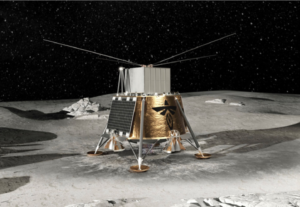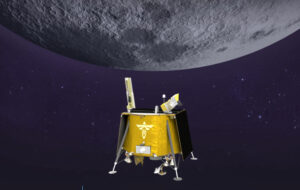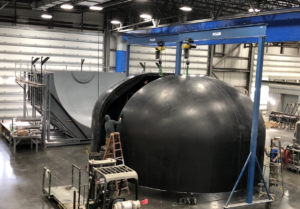
What Is Blue Origin’s New Glenn Landing Plan?
Blue Origin is in the process of manufacturing and testing various New Glenn hardware with the goal of launching for the first time next year. This next-generation launch vehicle has been under development for over a decade now and features a large design, payload capacity, reusable first stage, and other complex features. All of which have contributed among other reasons, to the extensive development of this hardware.
One particular area of interest for many has been the first stage downrange landing pad. In this case, as we have seen with the Falcon 9, certain missions require a landing platform in the ocean as the first stage doesn’t have enough propellant to return all the way back to land. In Blue Origin’s case, the plan for this process has changed quite a bit over time.
What started as a massive cargo ship meant to be converted into a mobile landing platform, changed to drone ships similar to SpaceX. This being said, following Blue Origin’s theme of keeping a lot of info to themselves, we haven’t heard practically anything on these platforms in a long time. Here I will go more in-depth into Blue Origin’s landing plan, the initial difficulties, progress, and more.
Ship To Drone Ship

On Blue Origin’s website, they highlight that New Glenn’s first stage is designed for a minimum of 25 flights. That means this first stage would need to consistently land at sea, be transported back to land, refurbished, and setup for the next attempt. A general process that Blue Origin has been working toward for years now.
While the goal has stayed the same, the actual hardware needed to make it possible has changed. Around 5 years ago in 2018, Blue Origin bought a former roll-on/roll-off cargo ship to be transformed into New Glenn’s future sea landing platform. Over the next couple of years, up until 2022, the ship had been in port undergoing a refit to prepare for a novel role of landing launch vehicle first stages. The idea being, the rocket boosters were planned to be recovered downrange of the Cape Canaveral Launch Complex 36 (LC-36) in the Atlantic Ocean while the hydrodynamically-stabilized ship was underway.
Blue Origin went with this approach at the start because they believed it would provide the best chances of recovering the first stage. For example, the ship was going to use stabilization technology intended to increase the likelihood of successful rocket recovery in rough seas, as well as help to carry out launches on schedule. However, in August of 2022, seemingly out of nowhere, Blue Origin abandoned its plans to use the ship as a landing platform, and the ship was towed to the Port of Brownsville for scrapping.
At the time, Clark Merritt, port director, highlighted that the process of converting the ship into a landing platform had gone too far to convert it back to a cargo vessel, which was why it was scrapped, but did not state why the conversion had stopped. In addition, a Blue Origin Spokesperson said, “Blue Origin is committed to safe and cost-effective access to space, and after careful consideration have made the decision to transition away from the Jacklyn as a landing solution.” In reality, the company likely determined this specific approach brought various concerns including cost, complexity, schedule, etc.
Not long after, we got a big update on Blue Origin’s new plan. Back in June 2022, Eric Berger tweeted saying, “It looks like Blue Origin will use the same contractor as SpaceX did to modify a large drone ship for landing its New Glenn rocket’s first stage. After moving on from the Jacklyn landing ship, it appears Blue Origin is pivoting to very Falcon 9-like operations.” This was in response to another tweet that went more in-depth into these future operations. Here the tweet mentioned, “LAD Services, Amelia, Louisiana has been selected by BLUE ORIGIN to build their new Autonomous Droneship Landing Platform, according to sources. Employees are expecting to build a nut and bolt copy of their previous SpaceX barges.”
With these updates coming out over a year ago now, it’s hard to say what the current progress and state of this hardware is. Blue Origin as a company has said practically nothing regarding landing operations for a while now. It’s also unclear assuming the company manages to attempt a launch next year, whether or not they’ll be trying to land the first stage right away. If so it’s unlikely to work on the first attempt, which could easily damage whatever the landing platform ends up being. In SpaceX’s case, we saw quite a few launches where the booster impacted a drone ship and exploded. For some of the initial New Glenn attempts, it’s possible we see a similar outcome.
New Glenn Progress

In recent months it seems as if Blue Origin has been ramping up work on all aspects of the New Glenn program. Despite the company’s private approach to progress and development, more updates are being released along with images and videos.
Just yesterday Blue Origin tweeted about New Glenn’s second-stage engine, the BE-3U, which is currently undergoing testing at the historic test stand in Huntsville. Each of the two BE-3U engines generates 160,000 lbf (710 kN) of thrust in vacuum. They are optimized to operate in the vacuum of space and enable the full range of customer missions, including direct injection to high-energy orbits.
At the same site, Blue Origin’s BE-4 engines have also been undergoing testing as manufacturing increases. A few years ago in 2020, Blue Origin opened its rocket engine production facility in Huntsville, AL. In a statement, the company was quoted saying, “The world-class engine manufacturing facility in The Rocket City will conduct high rate production of the BE-4 and BE-3U engines. As of right now, not a single BE-4 engine has flown, yet they are being produced in mass at the factory. This is because assuming things somewhat stay on schedule for Vulcan and New Glenn, once these vehicles start flying, they are going to keep flying very frequently. The Vulcan in particular will need a lot of these engines in the next few years.
Project Kuiper for example, Amazon’s satellite service, selected Vulcan for 38 launches. By 2026, Amazon’s FCC license requires that at least half of the satellites are in orbit and operational. This suggests that a majority of Vulcan’s launches will be expected to happen before 2026. Since Vulcan is expendable, every launch means two more BE-4 engines are needed. It’s possible the total 38 launches require 76 BE-4 engines. The one exception is the fact that ULA plans to reuse Vulcan’s BE-4 engines in the future. However, this plan is meant for the future and Tory Bruno has pointed out that they won’t work on this system until Vulcan has begun flying consistently.
In regard to New Glenn, Vulcan is still scheduled to lift off for the first time this December. With two BE-4 engines powering its first stage, the result of this launch will have a big impact on the New Glenn program. If the mission goes well, a lot of invaluable date will be provided to Blue Origin that can be applied to the 7 BE-4 engines on the rocket’s first stage.
In addition to engine development, physical test structures are underway. A few months ago, Blue Origin released a picture showing the inside of its main production building at Exploration Park. The image shows a bunch of hardware on the production floor including first and second-stage tank sections, barrel sections, domes, landing leg sections, and more. We have even seen some structural testing and continuing fairing recovery operations.
Even NASA has shown its confidence with a launch contract for next year. In February, the company announced that it had signed a contract with NASA and would launch the ESCAPADE mission to Mars. Interestingly, the launch is targeted for late 2024. During this mission, it will take ESCAPADE about 11 months to arrive at Mars after leaving Earth’s orbit, where both spacecraft will spend several months adjusting their orbits before they are in position to best capture data about the magnetosphere.
With this being a mission to Mars, if the launch date is missed, it will be a few years before the next opportunity do to the orbits and distance of the planet. While NASA has a good idea of Blue Origin’s progress, and whether or not the can be ready in time, the mission can tolerate higher risk. In a statement from NASA, they were quoted saying, “VADR provides FAA-licensed commercial launch services for payloads that can tolerate higher risk. By using a lower level of mission assurance, and commercial best practices for launching rockets, these highly flexible contracts help broaden access to space through lower launch costs.” In other words, they know this launch timeframe is ambitious but it’s not the end of the world if the launch date is missed. Either way, they genuinely believe New Glenn could be ready by then in around one year from now.
To add to all of this, even the company’s launch site underwent a lot of upgrades. Launch Complex 36 (LC-36) is located at Cape Canaveral Space Force Station just nine miles (14 km) away from the rocket factory. Blue Origin invested more than $1 billion to rebuild the launch site from the ground up. Completed in 2021, LC-36 is the first newly rebuilt launch complex since the 1960s.
Conclusion
Blue Origin wants to create a next generation launch vehicle capable of landing and reusing the first stage up to 25 times. After scrapping the landing ship, reports suggest that we can expect to see a drone ship for the company in the near future. We will have to wait and see how it progresses and the impact it has on the space industry.



